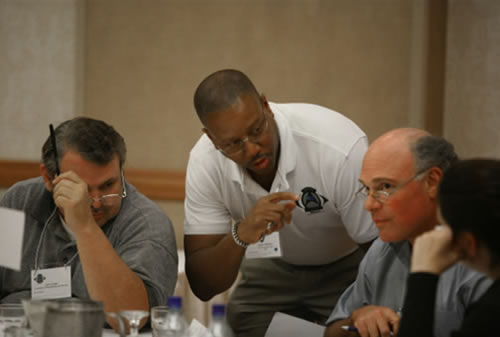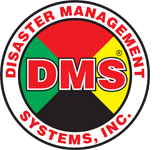Emergency Management

Get a Quote
View our Class Cancellation Policy
We conduct analyses of plans and emergency preparedness programs to ensure compliance with the National Incident Management System (NIMS) the National Response Framework (NRF) and local, state and national emergency preparedness and management standards.
We provide Updating or development of training programs providing:
- HazMat Emergency Response
- Incident Command System (ICS)
- National Incident Management System (NIMS)
- Standard Emergency Management System (SEMS)
- Homeland Security Exercise and Evaluation Program (HSEEP)
- Continuity of Operations Planning (COOP), better known as "recovery" in Industry) training
- Design, and provide facilitation and evaluation of Drills, Tabletop, Functional and Full-scale exercises.
- Prepare Hazardous Materials Business Plans
First On Compliance is well versed in all phases of Emergency Management and can assist your organization in the preparation, testing and updating of your Emergency Response Plan (ERP) and Standard Operating Procedures (SOP's).
National Incident Management System (NIMS)
NIMS was developed so responders from different jurisdictions and disciplines can work together better to respond to natural disasters and emergencies, including acts of terrorism. NIMS benefits include a unified approach to incident management; standard command and management structures; and emphasis on preparedness, mutual aid and resource management.
Standardized Emergency Management System (SEMS)
Is the system required by Government Code Section 8607(a) for managing emergencies involving multiple jurisdictions and agencies. SEMS consists of five organizational levels, which are activated as necessary:
- field response
- local government
- operational area
- regional
- state
Homeland Security Exercise and Evaluation Program (HSEEP)
Is a capabilities and performance-based exercise program that provides a standardized policy, methodology, and language for designing, developing, conducting, and evaluating all exercises.
Continuity of Operations (COOP)
Is known as disaster recovery in Business and industry. It consists of the precautions taken so that the effects of a disaster will be minimized and the organization will be able to either maintain or quickly resume mission-critical functions. Typically, disaster recovery planning involves an analysis of business processes and continuity needs; it may also include a significant focus on disaster prevention.
Phases of Emergency Management
Four primary phases of emergency management are outlined below, relating to mitigation, preparedness, response and recovery activities occurring before, during, and after an emergency or disaster has occurred.
Mitigation
Activities that either prevent the occurrence of an emergency or reduce an organization’s vulnerability in ways that minimize the adverse impact of a disaster or other emergency are examples of mitigation.
Specific hazard mitigation plans are prepared following a disaster. They reflect the current risk analysis and mitigation priorities specific to the declared disaster. Mitigation planning also includes a review of ways to eliminate or reduce the impact of future disasters.
Preparedness
Normal Operations
This Plan is considered to be in effect at all times to provide authorization to accomplish essential emergency preparedness activities. The preparedness phase involves activities undertaken in advance of an emergency. These activities will provide operational capabilities and improve effective response to disasters. Actions such as:
- Developing and revising disaster plans and hazard analyses
- Writing mutual aid operational plans
- Training response personnel
- Improving public information and communications systems
- Conducting exercises to validate the planning process
Are all examples of the planning activities conducted under this phase.
Those individuals and departments assigned emergency responsibilities participate in developing and maintaining current Standard Operating Procedures and checklists for the support of the Emergency Operations Center (EOC). Elements of these procedures include:
- Provision to support, maintain, staff, direct and control organizational resources during the time of a major disaster
- Specific emergency actions that will be assumed by staff and designated successors during emergency situations.
- Circumstances under which successor emergency authorities would become effective, and when they would be terminated.
- Current department personnel notification/recall rosters procedures and the means to implement. This should include a communication system to implement call-out rosters for personnel assigned to the EOC, support functions and field response team.
- Establishment of a system for communication to the EOC, Public Safety dispatch and to manage organizational resources, response field personnel and maintain contact with the EOC during emergencies.
- Developing mutual aid and other support agreements with appropriate local and state agencies and vendors
- Reporting of damage assessment information (casualties, damage observations, evacuation status, radiation levels, chemical exposure, etc.) to the EOC during an emergency
- Support of cleanup and recovery operations following disasters
- Training of assigned response staff and organizational volunteers to augment the performing of emergency functions
Increased Readiness
Organizations should take appropriate actions to increase readiness as a crisis begins to develop. Actions taken during the buildup of a crisis situation are designed to increase an organization's ability to respond effectively to a disaster. Organizations should consider increasing their readiness for an emergency upon the issuance of a credible, long-term prediction or advisory that could impact the County or State, or a rapidly deteriorating international situation that could lead to a possible attack upon the United States. Actions to be accomplished during this phase include but are not limited to:
- Inspections of critical facilities
- Reviewing and updating emergency plans and Standard Operating Procedures
- Updating resource lists
- Mobilizing resources
- Testing warning and communications systems
- Disseminating accurate, timely, emergency public information
- Recruiting of additional staff and Disaster Service Workers
Response
Pre-Impact
When an organization's emergency management organization recognizes the likelihood of a pending disaster, actions should be taken to save lives and protect property. The response phase is activated to coordinate emergency response activities.
The level of response necessary will be determined to meet the pending emergency. If the situation warrants, or upon notification from the County’s Emergency Management Organization, a full emergency will be declared.
Actions:
- Disseminating warning, emergency public information, and other advice and action instructions to the public
- Surveying and evaluating the emergency situation
- Marshaling, allocating, and positioning personnel and equipment
- Mobilizing necessary resources
- Activating the EOC using established guidelines
- Evacuating the facility if necessary
Immediate Impact
During this phase, emphasis is placed on saving lives, gaining control, and minimizing the effects of the disaster. Immediate response actions will be taken by emergency responders and may include mutual aid, local government and Operational Area responders.
Actions:
- Activating Incident Command Posts and the EOC
- Issuing emergency instructions to the affected community
Immediate Emergency
If an emergency occurs without warning, the EOC will be activated as rapidly as conditions permit.
Actions:
- Conducting evacuation and/or rescue operations as required
- Issuing emergency instructions to the affected community
Sustained Emergency
As the emergency continues, assistance is provided to victims of the disaster and efforts are made to reduce secondary damage. Regional or statewide mutual aid may be provided to assist with these efforts and response support facilities may be established. Resource requirements will continually change to meet the needs of the incident.
Actions:
- Providing for the care and treatment of casualties
- Collecting, identifying, and disposing of the dead
- Providing for the mass care (food, lodging, etc.) needs of displaced persons
Recovery
At the onset of an emergency, actions are taken to enhance the effectiveness of recovery operations. Recovery is both a short-term activity intended to return vital life-support systems to operation, and a long-term activity designed to return infrastructure systems to pre-disaster conditions. Recovery also includes cost recovery activities.
As soon as practical following a major emergency, normal management of operations should be restored. If major damage has occurred, the recovery aspects of this Plan will be implemented to coordinate planning and decision-making for recovery and reconstruction efforts.
Actions:
- Implementing health and safety measures
- Protecting, controlling, and allocating vital resources
- Restoring or activating essential facilities and systems
- Enforcing police powers in controlling the locations
- Establishing access controls, erecting traffic barricades, etc.



